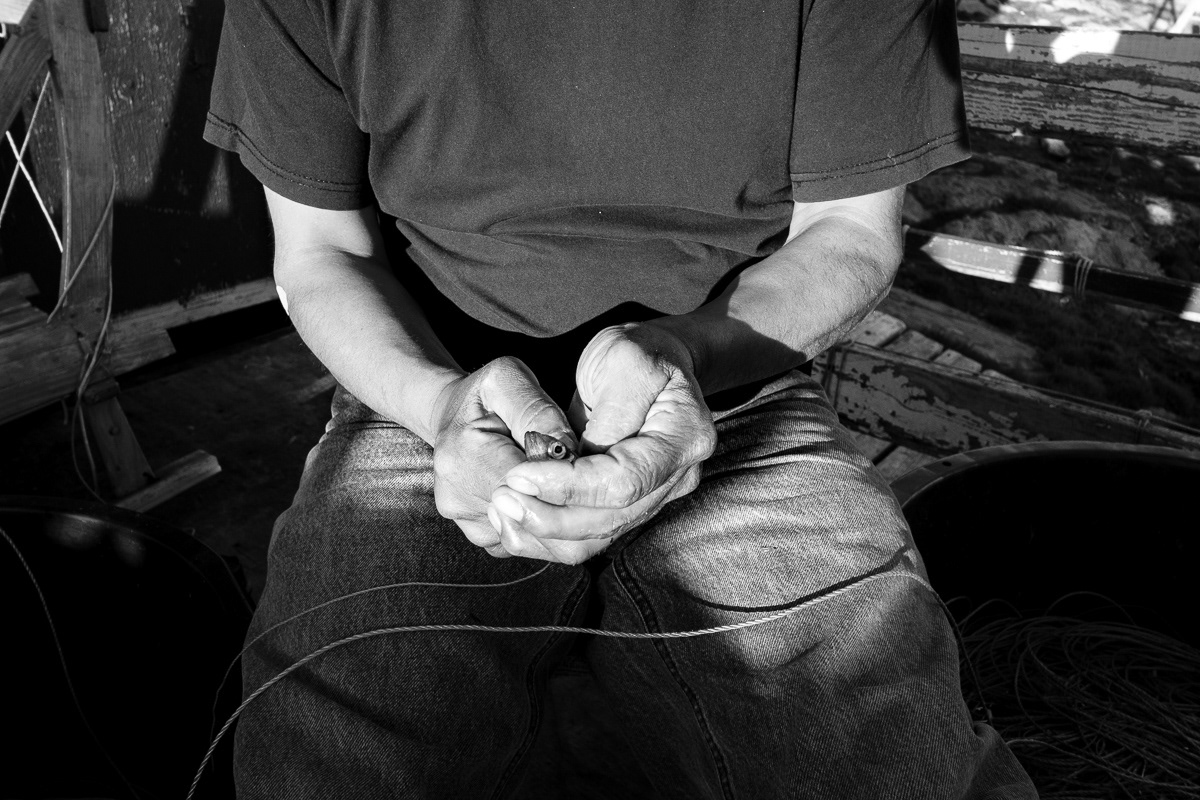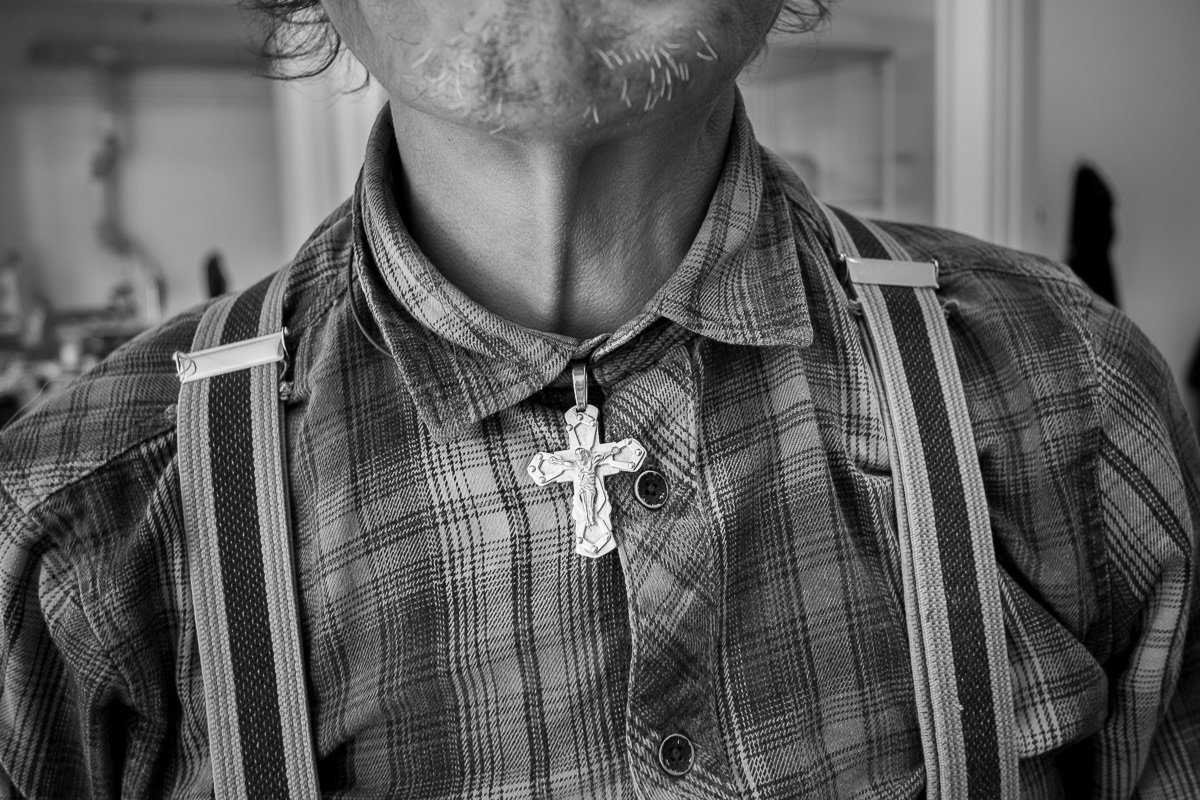





























Angmagssalik is an island on the sparsely inhabited east coast of Greenland, a few km south of the polar circle. Most of the people, around 2000, live in Tasiilaq, the largest town, while another thousand more are scattered among the nearby villages of Kulusuk, Sermiligaaq, Kuummiit, Tiniteqilaaq and Isortoq. Historically the area has been very isolated and even nowadays it feels — in the words of locals — 15 years “behind” the centres on the west coast, a lot of time in the rapidly changing Greenland. Fjords are sometimes blocked by ice up until July and flying is the only way in and out. The polar stream, a current flowing south from the Arctic transporting pieces of arctic pack and icebergs, makes the mainland complicated to reach in summer and impossible in winter. The government lifeline ship, an ice-strengthened cargo, only runs May to November. In winter, only flights supply the supermarkets. The Greenlandic society is traversing an era of rapid change and, because of its isolation, the effects of these changes are more evident on this coast. Liquidating Greenland’s problems with rapid “modernisation”, isolation and winter darkness is simplistic and, as it is often the case, reality is more complex than that. The following lines are just the result of my readings and personal observation over a limited amount of time and should not be regarded as Truths. Talking to locals, a sense of bewilderment, emptiness and lack of perspectives is evident. For those who have the opportunity and are strong enough, both physically and mentally, to become fishermen and hunters, the environment provides endless opportunities for self realisation. Rarely I have witnessed a happier person than Simujok when he shared he would go narwal hunting with his kayak in the Nansen fjord the following weeks. The same goes for those who have the opportunity to study, speak fluent Danish and English, go abroad and decide to come back because here, amid the nature, they feel at home. For all others of lesser means, both inner and outer, life can become a limbo. Familiar bonds are very strong and leaving home is too hard for many. Several do not have a stable job but jump between opportunities. Housing and food, especially in winter, can be extremely costly for the local salaries. Traveling is extremely expensive (consider an average 800€ return to the west coast or to Iceland) and make many feel locked-up here. The most evident symptom is the large consumption of alcohol, beer and wine as the rest is not sold in East Greenland, which is mostly evident at weekends. Extended families and friends gather on the hills around town on Friday afternoon and keep on drinking until Saturday evening, or until they pass away. The whole “process” repeats weekend after weekend and resembles a gentle falling asleep and is an experience to share with the rest of the family. Other symptoms such as domestic violence and compulsive gaming and gambling are equally frightening but harder to spot. As is drinking alone at home. Suicides are extremely common, at least compared to Europe. Almost every person I spoke to lost a friend, a sibling or a colleague. No real public support exists. Tasiilaq’s municipality’s only recovery programme starts only upon request and involves experts flying over from Nuuk, Greenland’s capital city. In one of the villages, Sermiligaaq, a great deal of work in this sense has been done by Robert Peroni. By going family to family repeating what of their beloved traditional life will be lost if they start drinking, the community decided to have it removed from the local supermarket. The need for psychologists is evident, but there is only one in the whole district, available 2h a week and doesn’t speak greenlandic, thus needing a translator. The underlying issue here is the lack of a clear path forward. After secondary school and — more often in villages — sometimes even sooner, many young people feel abandoned, helpless and stuck between traditional family values and what they perceive as "modernity". It is not all negative obviously and it is extremely interesting how a few manage to find their way, even after years of "waiting", like Kasper, who decided to start studying to become priest to be a guide for his community. This series, the result of a few weeks spent in the area living in people’s homes whenever possible, I tried to capture both highs and lows, strengths and weaknesses of this place and its inhabitants. Tasiilaq, July 2022.





























